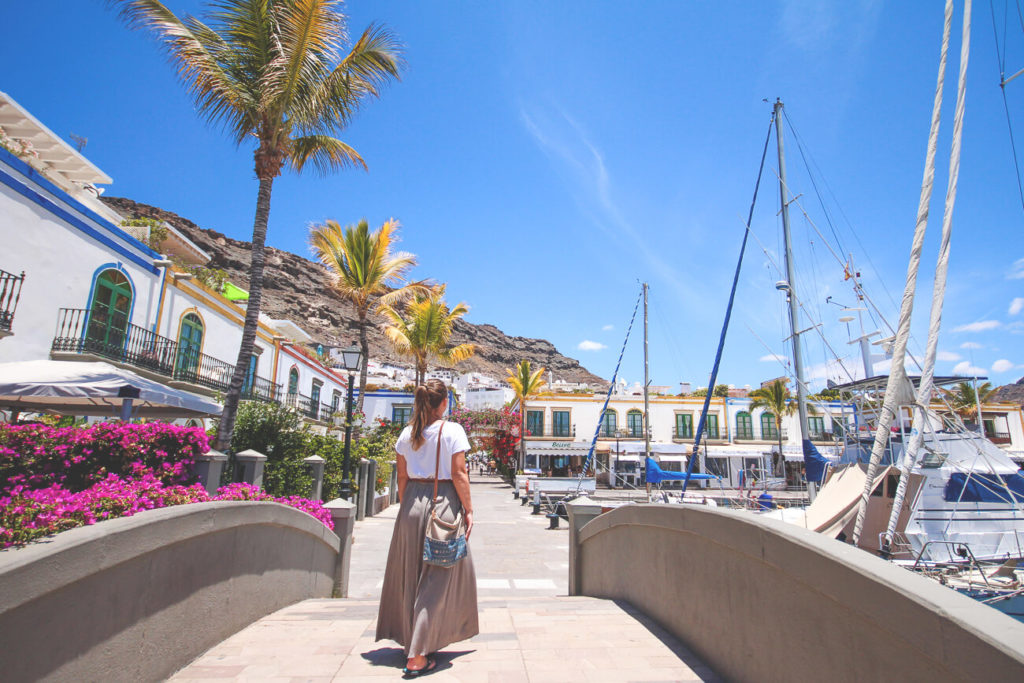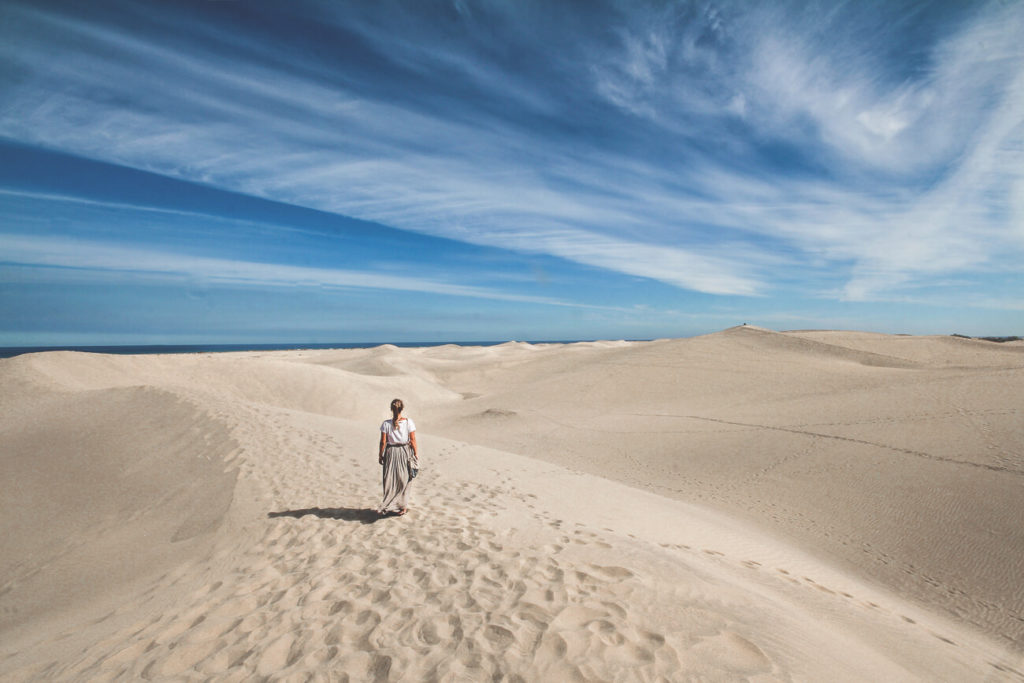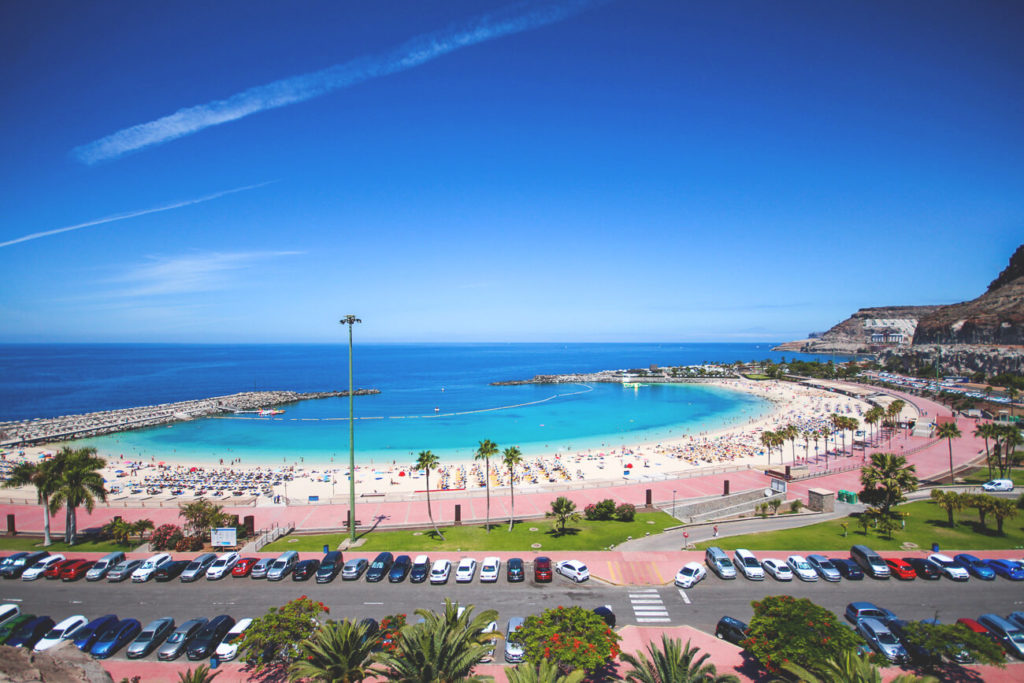Gran Canaria, one of the largest of the Canary Islands, is located in the Atlantic Ocean near the coast of Africa and is known for its mild and pleasant climate. Due to its mild climate, the island is often called the “Islands of Eternal Spring.” But when is the best time to visit Gran Canaria? We asked ourselves that before our trip.
Although the weather remains mild throughout the year, there are some differences in temperature, rainfall, and wind, depending on the season and the part of the island you are staying in. In the following article, we provide you with detailed information about Gran Canaria’s climate, the best times to travel for various activities, and the climatic differences in different parts of the island.
- Climate on Gran Canaria
- Microclimate on Gran Canaria
- Climate Zones on Gran Canaria
- The Best Time to Travel to Gran Canaria
- Temperatures and Precipitation
- Best Time to Travel to Gran Canaria – Conclusion
Climate on Gran Canaria
Gran Canaria benefits from a subtropical climate characterized by mild winters and warm summers. You can expect pleasant temperatures all year round, even in winter. This is due in part to its proximity to the equator and the influence of the Atlantic Ocean.
The trade winds play a major role in the climate of the Canary Islands. They bring humidity and cool the island, especially in the summer months. These winds also ensure that Gran Canaria has a very balanced weather year-round, without extreme heat in summer or icy cold in winter.

Microclimate on Gran Canaria
Although Gran Canaria is a relatively small island, there are temperature differences depending on the region. In the island’s interior, there is a mountain range that significantly influences the island’s climate. The north of the island tends to be cooler and wetter, partly due to the trade wind clouds that hang over the mountains.
The south is drier and sunnier due to the desert wind from the Sahara. It can get quite hot here in summer, with temperatures around 30°C. The mountainous regions in the center of the island, in turn, offer a very unique climate, which is quite different from the coastal regions.
Climate Zones on Gran Canaria
Gran Canaria is divided into different climate zones:
Coastal Regions: The coastal areas, especially in the south, await you with warm temperatures and sunny weather. The southwest of the island (Playa del Inglés, Maspalomas, Puerto de Mogán) is considered the driest region.
Central Island: In the higher elevations of the central island, around the Pico de las Nieves (the island’s highest point at 1,949 meters), temperatures are significantly cooler, and snow may even fall.
North: The north is wetter and somewhat cooler, as the trade winds often bring moisture. Rainfall is more frequent here, especially in the winter months. In summer, maximum temperatures reach around 22°C.

The Best Time to Visit Gran Canaria
Due to its mild climate, you can travel to Gran Canaria all year round. However, there are certain seasons that are better suited for various activities. Whether you’re planning a beach holiday, hiking, outdoor adventures, or a relaxing getaway depends on which season best suits your preferences.
☃️ Winter (December to February)
With mild temperatures and little rain, winter in Gran Canaria is the perfect time of year for those looking to escape the cold European winter. Daytime highs typically range between 19 and 23°C, while nighttime temperatures drop to around 13 to 16°C. There can be more precipitation in winter, but the rainfall is comparatively low. Look forward to mostly sunny days.
Winter Activities:
- Beach Holidays: Even though the temperatures aren’t hot, the mild winter days are ideal for a relaxing beach holiday, especially in the south of the island. Water temperatures are around 18-20°C.
- Hiking: Winter is a good time to go hiking in Gran Canaria. Cooler temperatures and blooming vegetation await you.
- Culture and Festivals: Many tourists come to the island during the Christmas season to enjoy the holidays under palm trees.

Spring (March to May)
Spring on Gran Canaria offers pleasantly warm temperatures, ranging between 22 and 24°C. The rain subsides and the island truly blooms. If you enjoy active travel, the spring months are one of the best times to visit Gran Canaria.
Activities in Spring:
- Hiking and Cycling: Spring is one of the best times to visit for outdoor activities such as hiking and cycling. You can expect mild temperatures and lush green scenery.
- Culture and Festivals: Spring is the time of flowers, and various festivals take place on the island, such as the popular Almond Blossom Festival.
Summer (June to August)
The summer months in Gran Canaria are warm, but rarely oppressively hot. Thanks to the trade winds, temperatures remain pleasant, even though it can reach 30°C in some areas. Summer is also the peak season for beach vacationers and water sports enthusiasts, as the sea is pleasantly warm at up to 23°C.
Summer Activities:
- Beach Holidays: You can experience the classic beach holiday in the summer months. With temperatures between 25 and 30°C and water temperatures of 22 to 24°C, the sea invites you to swim, snorkel, and enjoy water sports.
- Water Sports: Activities such as surfing, windsurfing, kitesurfing, and jet skiing are also very popular in the summer. There are many schools and rental stations along the coast.

Autumn (September to November)
Autumn on Gran Canaria offers similar conditions to spring, but tends to be a bit warmer. Daytime temperatures are a pleasant 24 to 28°C, and the sea is still pleasantly warm after the hot summer. The autumn months are ideal for those who want to avoid the summer heat but still enjoy sunny weather.
Activities in Autumn:
- Culture and Festivals: Autumn is a good time to experience local festivals and cultural events in Gran Canaria. There are many opportunities to immerse yourself in the local culture (e.g. Fiesta Mayor, Fiesta de la Manzana).
- Beach and Relaxation: With the high season over, the beaches are less crowded.
Temperatures and Rainfall
Temperatures in Gran Canaria are generally very stable, but there are variations depending on the season. The following table shows the average temperatures, which can vary depending on the region:
Precipitation
Most precipitation occurs between October and March, with November and December being the rainiest months, with 7 to 8 rainy days per month. The summer months (June to August) are generally very dry.
Best Time to Visit Gran Canaria – Conclusion
As you can see, Gran Canaria is rightly a year-round destination. Thanks to its subtropical climate, numerous microclimates, and numerous activity options, the sunny island is ideal for nature lovers, sun worshippers, and water lovers alike.
The best time to visit Gran Canaria depends primarily on your personal preferences – whether you’re looking for mild temperatures and tranquility in winter or want to enjoy the beautiful beaches and warm sea in summer.